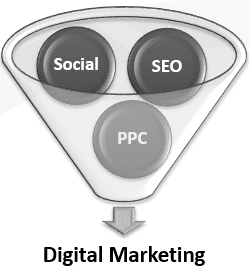First Things First: You Cannot Multitask
This isn’t ‘new news’ by any stretch, but it’s terribly easy to forget—our brains are only truly capable of focusing on one thing at a time. According to Earl Miller, a neuroscience professor at MIT, rather than being able to focus on multiple things at once, we’re simply shifting our focus at a very high speed. Another neuroscientist, Daniel Weissman, of the University of Michigan, points out in the same NPR article that we “frequently overestimate our ability to handle multiple tasks”. The real question here is—what do we do about it? How do we meet deadlines while knowing that we can’t truly juggle a million things at once?
Get Organized
While it’s tempting to continue to think that we can “do everything all the time,” it’s best to move forward and figure out a better method for managing our workloads.
There are several methods for getting organized, so find what works best for you. Do you use Outlook to keep track of tasks, deadlines, and a journal of your time spent? Do you prefer good, old-fashioned pen and paper to do lists? From a structured method for planning your meetings to prioritizing your tasks, being organized will serve you across the board as it applies to accomplishing your goals.

Communicate with Co-workers
A great tip I acquired at a SkillPath Seminar entitled, “Managing Multiple Projects, Objectives and Deadlines” (which is where the myth of multitasking was truly driven home for me) was to enlist the help of others to stay organized. Ensuring that your communication is clear and understandable allows for all members of the team to be aware of your goals. If you don’t clearly communicate to your team that you’ll be devoting your afternoon to finishing up documentation for a project, they may continue to (lovingly, of course) push you toward working on a different project. Use your newfound organizational techniques to share your plans with your team and encourage them to get organized as well—it’s a win-win situation.
Don’t Forget to Breathe
Transitioning from believing in your ability to multitask to an organization-based method of operation can be stressful—don’t forget to breathe! While you certainly can’t expect perfection from yourself, you can consistently work toward bettering your personal system for managing your workload. Get organized, communicate with your co-workers, and experience your focus and productivity levels increase exponentially.





